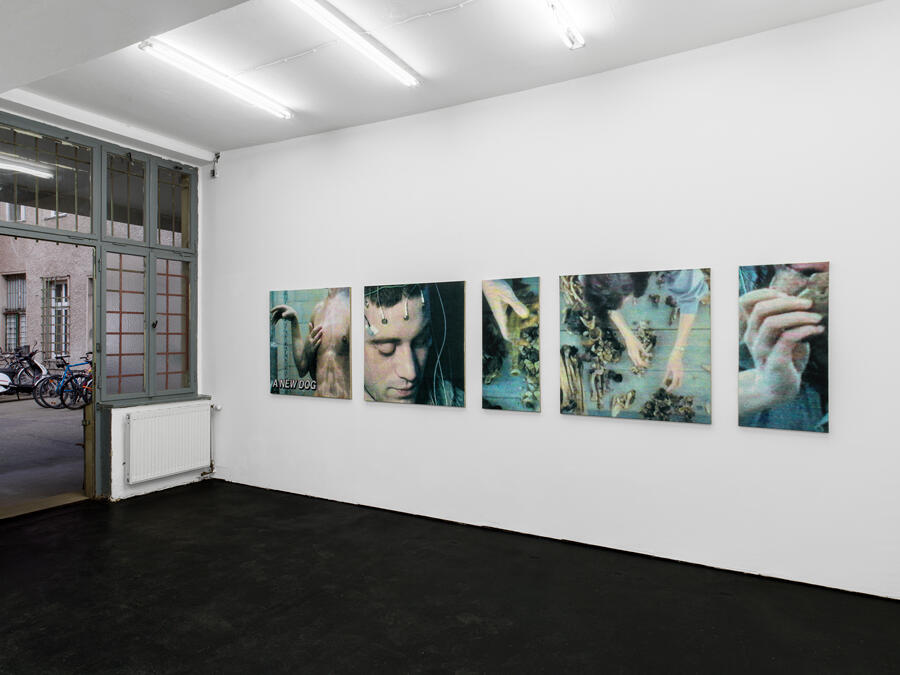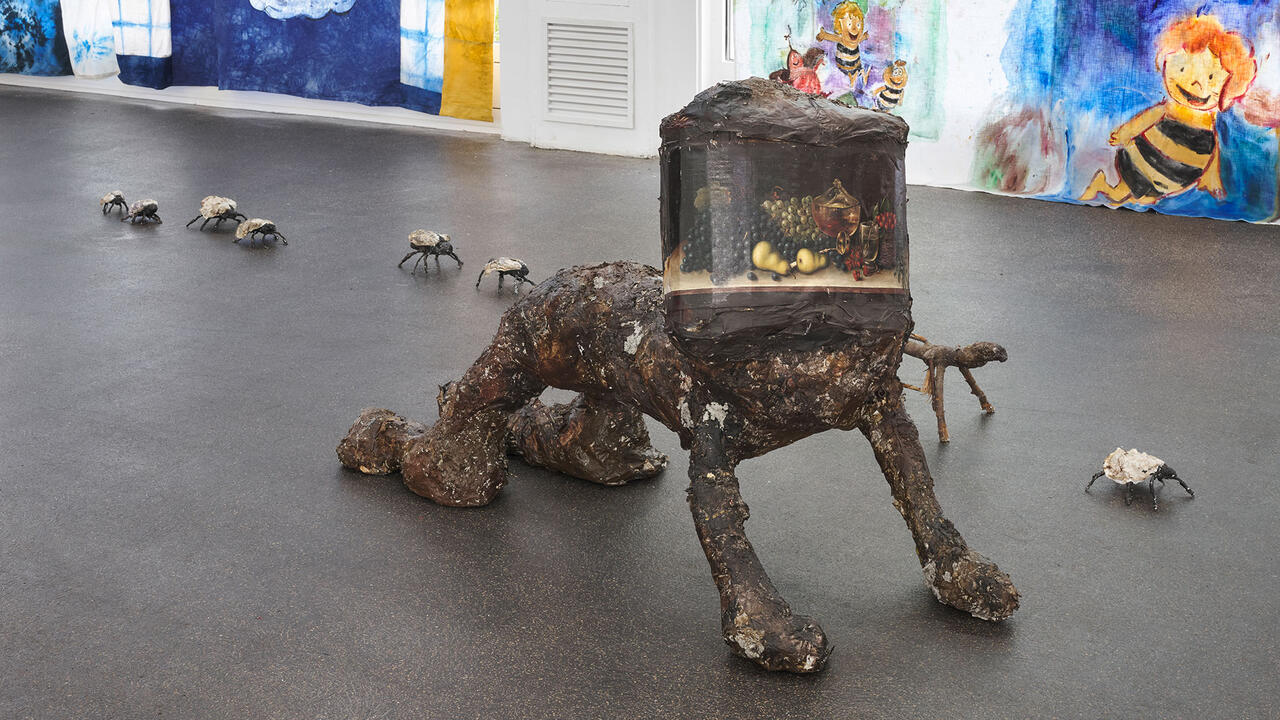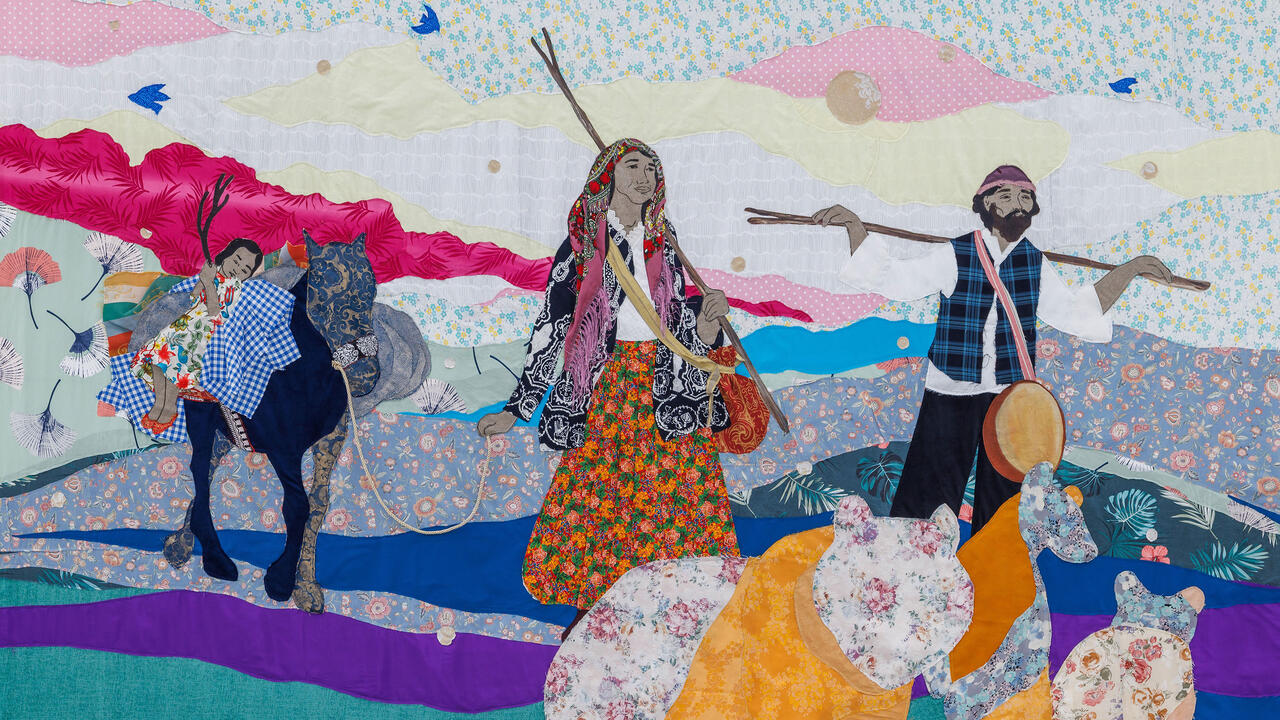What to See During Berlin Gallery Weekend
From Nina Canell's seven tonnes of mollusc shells at Berlinische Galerie to a leftist-philanthropic flower show at Isabella Bortolozzi, Claire Koron Elat previews the essential exhibitions opening in the German capital
From Nina Canell's seven tonnes of mollusc shells at Berlinische Galerie to a leftist-philanthropic flower show at Isabella Bortolozzi, Claire Koron Elat previews the essential exhibitions opening in the German capital

Louis Fratino
Galerie Neu
29 April – 04 June 2022

Memories are like sparkling water that has lost its fizz: cerebral relics that once were vibrantly present. In his large-scale oil paintings, New York-based artist Louis Fratino relives his recollections of sexual encounters, delicate touches and domestic scenes, referencing Western art movements such as fauvism and cubism. Titled ‘Die bunten Tage’ (‘The Colourful Days’), Fratino’s first solo exhibition at Galerie Neu offers a comprehensive account of the 29-year-old’s practice, which veers between provokingly explicit visuals of gay male sex and private, non-sexual intimacies. Studio Nude (2022), for instance, shows a zoomed-in snippet of a naked young man’s hip and arm. His right hand tenderly caresses his left arm as he stands next to a pile of books. While hugs are certainly not going to solve anything in these dire times, they might help us feel less alone.
‘Fugue’
Galerie Isabella Bortolozzi
28 April – 1 May 2022

While the end of the world might inevitably come, the end of our capitalist society might be even more imminent. The exhibition invitation for ‘Fugue’ at Isabella Bortolozzi quotes from a radical leftist tract, The Coming Insurrection (2007), by the anonymous French group The Invisible Committee. ‘[T]he economy is not “in” crisis, the economy itself is the crisis’, is the maxim of this group exhibition, which includes more than 30 artists, among them Ed Atkins, Marc Camille Chamowicz, Klara Lidén and Hannah Quinlan & Rosie Hastings. All artists created flower bouquets with individual prices: a picture of the bouquets alongside a thank you note can be ‘bought’ by donating the price to a charity organization via a QR code. A bohemian idea has become reality here: saving the world through flowers.
Trisha Donnelly
Galerie Buchholz
29 April – 4 June 2022

A heavy silence dwells in Trisha Donnelly’s work, one that calcifies as the absence of work titles, a press release or an exhibition title in her current solo show at Galerie Buchholz. The missing (written) contextualization of her exhibited work, which includes a new series of black and white RC prints (all works 2022) depicting unidentifiable forms that melt into rhythmic patterns, adds a layer of mystery and ambivalence that Donnelly is well known for.
‘Othering’
Dittrich & Schlechtriem
29 April – 25 June 2022

As suggested by its title, ‘Othering’ at Dittrich & Schlechtriem involves 12 artists exploring the concept of alterity. While the exhibition proposes that the process of ‘othering’ is paired with social exclusion – which is certainly true when illuminating one pillar of European Modernity: schematically dividing between ‘civilized’ (we) and ‘uncivilized’ (everyone else) – it also shows how deviating from the norm can be desirable. Jonas Wendelin’s sculptural objects Involution I (all works 2022) and Cubicle I look like supernatural matter from another world, and with lunar tourism on the rise, the ‘Other’ might soon become a status symbol. It suggests that alterity does not automatically result in societal marginalization but can mean the opposite instead: being a social pioneer – as long as you can afford it.
Matthias Groebel
Schiefe Zähne
30 April – 4 June 2022

The cyborg, first popularized by Donna Haraway’s critically acclaimed essay ‘A Cyborg Manifesto’ (1985), is a popular motif in contemporary art today. Cologne-based artist Matthias Groebel, who currently has a solo show, ‘The Rhythms of Reception’, at Schiefe Zähne, has been merging machines with art since the early 1990s. His computer-assisted paintings are created using a self-made electro-technical device composed of a digitally operated airbrush. These works, dominated by red, green and blue hues, such as Untitled (1996), are reminiscent of old-style CRT television screens, a fact that seems to visually contradict Groebel’s ostensibly highly contemporary approach.
Stephanie Comilang and Simon Speiser
Julia Stoschek Collection
28 April – 4 December 2022

The video and virtual-reality components of Stephanie Comilang and Simon Speiser's Piña, Why is the Sky Blue? tell the story of an artificial intelligence at work both everywhere and nowhere. The work centres on interviews with two indigenous feminists and a healer from Ecuador, as well as a Filipina Babaylan, or shaman, while Piña – who is invisible in the video’s near-present but embodied in the VR element’s far-off future – speaks over footage from landscapes in both countries, where Comilang and Speiser both have ancestral roots.
Nina Canell
Berlinische Galerie
30 April – 22 August 2022

For her site-specific installation Muscle Memory (7 Tonnes) (2022), at Berlinische Galerie, Nina Canell has covered the floor with seven tonnes of organic material composed of the shells of marine molluscs. Visitors are invited to wander around on the seashells, which through the 16-week duration of Canell’s solo exhibition ‘Tectonic Tender’ will gradually transform into a blanket of calcite crumbs, and at some point, into fine powder. The scraping sound of shoe soles on coarse shells turns the artist’s work into an immersive – yet intimate – soundscape. Muscle Memory (7 Tonnes) will be shown alongside other works relating to Canell’s interest in (according to the exhibition literature) ‘minerals, animals, energies and technologies’, including the 2017–18 film Energy Budget, made in collaboration with Robin Watkins.
Main image: Stephanie Comilang & Simon Speiser, Piña, Why is the Sky Blue, 2021, video still. Courtesy: the artists and JSC Berlin



















